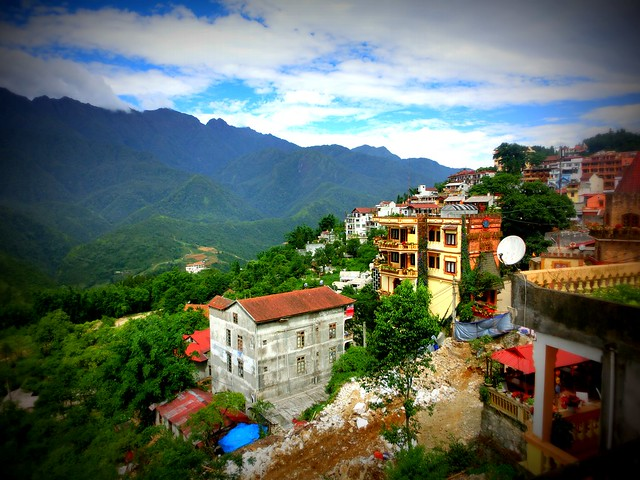This is something that is truly fascinating. The power of a decentralized digital network that operates as an economy is completely transformative. It is also the basis of the idea of the network-state.
What if we took something like Hive and grew it into tens of millions of people around the world? This is nothing new. Digital networks do this all the time.
Where this gets interesting is what if a couple hundred thousand of these people were in the same geographic area? How does that change the equation?
All of this is stuff to ponder. Web 3.0 introduces a paradigm that not only can alter the online world, this can be transformed into our physical realm.
Could this morph into real world integration where it becomes the standard for a geographic area?
That is what we will take a look at in this article.

Chicken Or The Egg
Here is where we find the first quandary.
Which comes first, online success that is moved into the realm world or the reverse? By this, do we see people who are in a geographic area start to adopt Hive and utilize what it offers. This is something we are starting to see in areas such as Sucre, Venezuela.
Or do we have the reverse where a group of people from Hive decide to relocate to an area. By doing this, they become a significant portion of the local population, exerting more influence over time.
Naturally, the best solution is where both approaches are utilized. Of course, this means that we have this happening organically since no central planning is involved, at least to start.
Instead, we have pockets forming in different area, each furthering the cause of the entire ecosystem.
Decentralized Financial Network
Consider the possibilities of decentralized finance (DeFi). This is something often discussed but not in the context of real world use cases.
We often discuss the idea of Hive assets, i.e. Hive bonds, as an instrument of collateralization. This is often tied to the financial markets and framed in context of the global financial system.
However, what if we take this idea to a more local level. We will use Sucre as the example. Here we have a geographic region that operates like any other. The components of the local economy will be similar to most. One thing that is required is a place to live. After all, no matter where we are in the world, shelter is required.
For most, real estate acquisition is done through the banking system, getting a loan in the form of a mortgage. Here is the property is used as collateral for the money to acquire it.
Let us change the scenario up and turn it into Web 3.0.
For Sucre, we remove the idea of mortgages as the way local property is financed. Instead, we make switch this to DeFi. Imagine the ability to take digital assets and, through a layer 2 smart contract, use that as collateral for the loan. Hence, the purchase of property is financed through the ownership of online assets.
What if this becomes the standard in the geographic region? Instead of using the traditional finance (TradFi) model, we develop a Hive based one.
This is what a decentralized financial network can offer. The ability to penetrate the realm world is possible.
Local Governance
The one challenge with concepts like this is they often clash with local laws. We have a long history of how things are done, with powerful players protecting their vested interests.
For this reason, local governance is required. Here is where the numbers enter.
We see how cryptocurrency is already entering the political discussion. This makes sense since the focus is on the monetary aspect of things. Therefore, most are going to have an opinion, even if ill-informed.
What is interesting is the network-state is a lot more than just money. It is incorporating a completely new model for society. We see the merging between the physical and digital world. This makes the existing governance system obsolete.
It is also a grassroots, ground up approach. We are not taking isolated aspects to focus upon. This concept is meant to penetrate every area of life. It is the basis upon which a community (or society) can be built.
That means changing the laws to something different. Here we have the likely path of having to deal with the existing government, until it can be changed. It is why smaller regions could be the epicenter, at least in the early stages.
Why Hive?
Hive already offers communities. People are able to set them up online fairly easily. Of course, this is a long way from geographic domination.
However, the social media aspect of Hive is something we do not see tied to blockchains, at least so far. Then we have to consider the idea of a base layer stablecoin. If we think about different pockets growing globally, the fact that all could share a coin means the network effect is enhances as these communities grow. It is all tied into the same system.
Then we have the ability to develop smart contracts. This is important for scalability. We have a point to consider: if smart contracts are indeed going to take over, there will be hundreds of millions of them required (or billions). This is something that is going to require scaling.
And this is the point where some networks run into issues.
Ultimately, all these pockets will grow. We only see a couple forming around the world. At the same time, we see the digital activity and development taking place.
All of this could end up merging as things morph. The idea of the network-state is not as crazy as people think.
If you found this article informative, please give an upvote and rehive.

gif by @doze

logo by @st8z
Posted Using LeoFinance Alpha